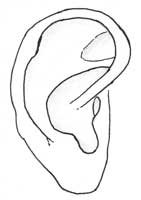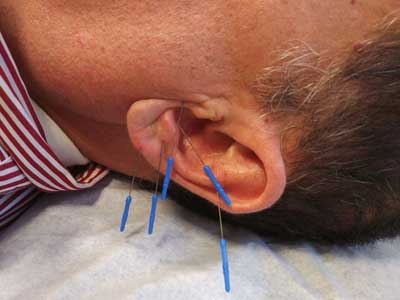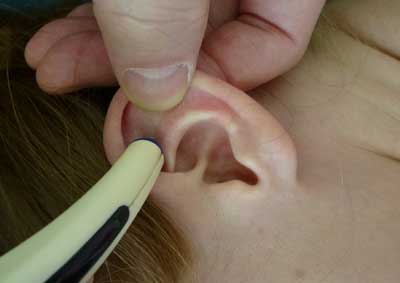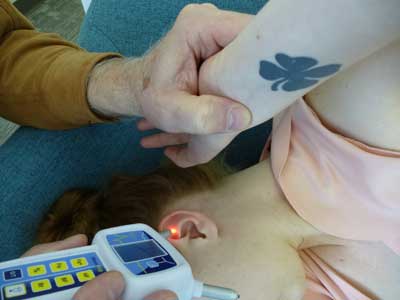Auricular Medicine vs. Auriculotherapy vs. Ear Acupuncture
Ear Acupuncture is a bit of a misnomer. The word "acupuncture" implies a Chinese Medicine theory which posits the movement of energy or "chi" in meridians of the body. By stimulating points along these meridians one is able to move or shunt energy or clear stagnations to improve health. Also it is not obligatory to use needles to engage in acupuncture treatment. It can be done with a laser, electrical current, or even just fingertip pressure. Historically, Traditional Chinese Medicine (TCM) has used acupuncture needles applied to the ear, but the points used were not considered part of the meridian system and there was no concept of a somatic reflex mapping of the ear points to the body until the work of Dr. Paul Nogier. Interestingly, since the ear somatology reflects the whole body, acupuncture points can be found and used on the ear.
Auriculotherapy is a method of treatment and a method of diagnosis based on the reflex properties of the external ear using points distributed according to a precise somatopy. Treatments are commonly done with acupuncture needles, an electric point-finder tool, or by a low level laser light emitting tool. Auriculotherapy treatment fully exploits the energetic reflex connections between the ear and the body's anatomy and physiology. The power of this technique is that one can have access for stimulation and repair of the body through the ear alone.
Auricular Medicine subsumes the previous definitions for ear acupuncture and auriculotherapy and adds the use of the VAS (Vascular Autonomic Signal) or Nogier Pulse. The VAS is an arterial phenomenon perceptible on the radial and other distal pulses in physiological conditions appearing after a micro stress on the skin or after an emotion. Auricular Medicine is an experimental method of care based on the vascular signal for the diagnostic information applied when treating points on the external ear or in other ways. The VAS taps into the autonomic nervous system which can be harnessed to yield information on the body's response to for example, allergies and food sensitivities, toxic loads (eg. mercury and other heavy metal poisoning), need for specific vitamins or minerals, etc..




